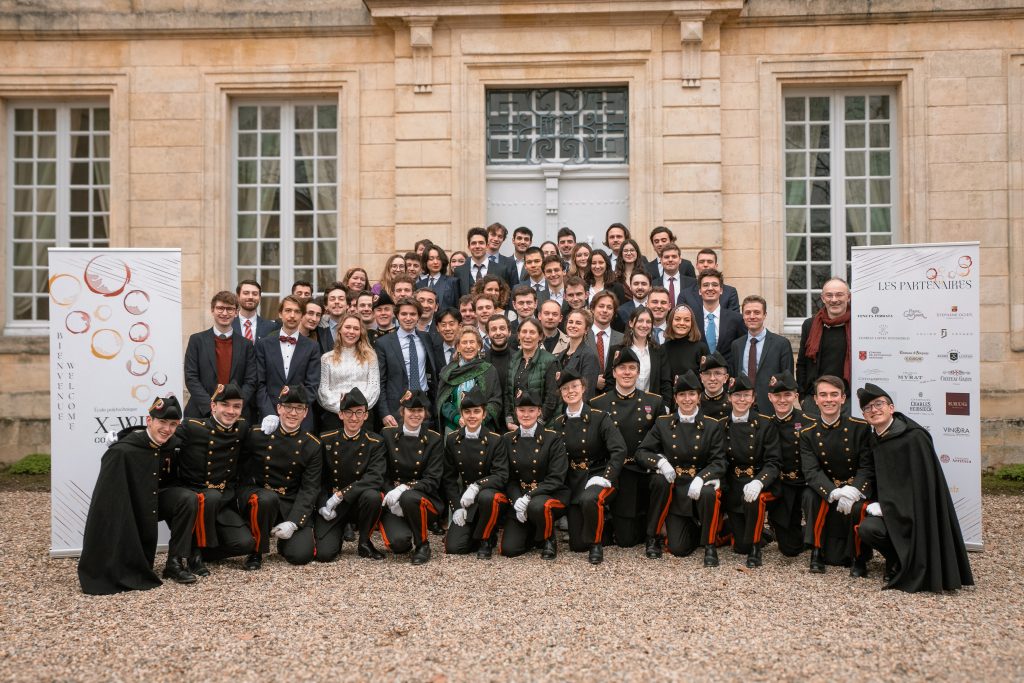This website uses cookies so that we can provide you with the best user experience possible. Cookie information is stored in your browser and performs functions such as recognising you when you return to our website and helping our team to understand which sections of the website you find most interesting and useful.
SupAgro Montpellier triumphs in the seventh X-Wine Contest at Château-Figeac
The seventh edition of the X-Wine Contest, a fine wine competition that pits young oenophiles from major French and international universities, took place at Château-Figeac in St Emilion last Saturday (3 February). db’s Bordeaux correspondent Colin Hay was one of the judges.

The competition, meticulously organised by the prestigious École Polytechnique starts with a qualifying round that sees 15 student teams (comprising three people in each team) pit their skills against one another in three blind-tasting trials interspersed by two theoretical tests, with the three highest-scoring teams going through to a final blind ‘taste-off’ to win the coveted glass goblet.
The practical part of the contest in the qualifying round consisted of three flights of four wines – a white flight, a red flight and a mystery-themed flight of wines linked by a common feature revealed to the contestants only at the last minute. This year the theme was wines produced from vineyards planted on volcanic soils.
The teams were given 25 minutes for each flight and asked to identify the country, region, appellation, grape varietal(s), vintage and estate of each wine in the series. A four-strong panel of judges oversaw proceedings. It comprised Philippe de Lur Saluces (of Château de Fargues in Sauternes), Cloé Azaïs (the director of the Négociant house, Legrand & Associés in Bordeaux), Frédéric Faye (the general director of Château-Figeac itself) and, presumably to make up the numbers, myself (representing The Drinks Business and not on this occasion Sciences Po, Paris – who had also entered a team).
Amongst the highlights of the tasting (at least for us jurors who were not being evaluated on our blind-tasting prowess) were:
- in the first flight, Stéphane Ogier’s Condrieu La Combe de Malleval 2019 from the Northern Rhone and Maurice Schoech’s Alsace Grand Cru Rangen de Thann cuvée Harmonie R from 2015
- in the second flight, Cheval des Andes 2018 from Mendoza in Argentina and, from rather closer by, just across the appellation border in Pomerol and almost visible from Figeac’s tasting room, Château Gazin – here the 2012 vintage and,
- in the third flight, Tenuta Ferrata’s Punta Drago 2022 from the (volcanic) slopes of Mount Etna in Sicily (the Nerello Mascalese varietal being not perhaps the easiest to pick)!
And, to give you a sense of the severity of the challenge posed to the teams even in the theoretical component, here are a few of the questions they were posed:
- In which French film of the 1960s do we see British soldiers taking refuge amongst the patients of the Hospices de Beaune?
- Which estate from the Bordeaux Côtes de Francs appellation has its own AOC?
- Which grape variety or varieties are authorised in the making of Clairette de Die?
And (a particular favourite of the jury):
- Draw the molecule responsible for cork taint.
Thankfully no-one was keeping a record of the jury members’ performance (and, just to be clear, we picked neither the wines nor the questions)!
In the final round, the three qualifying teams – SupAgro Montpellier (more formally, L’Institut Agro Montpellier), Université Panthéon-Assas Paris II and ENSTA Paris (who narrowly pipped an impressive team from the University of Oxford to the final taste-off place) – were each given 15 minutes to taste (again, blind) three further wines (one white, one red and one sparkling). They were then asked to present each wine in turn to the jury, describing it, identifying in the process its country and region of origin, its appellation, constituent varietal(s), vintage and estate and, finally, to provide a food pairing.
After a careful process of deliberation, during which the jury agreed unanimously both the rank ordering of the three finalists but also that all three had performed rather better than a hypothetical team comprised of the jurors themselves, the team from SupAgro Montpellier was declared this year’s winner of the X-Wine Contest. Congratulations to them (Alexis Toustou, Baptiste Boissenot and perhaps above all Théo Derenoncourt, who was also part of last year’s winning team), to all of the finalists and, indeed, to all of the teams.
The three wines in the final ‘taste-off’ were a gloriously refined and (for the vintage) extremely elegant Châteu Lafite-Rothschild 2011, a deceptively impressive Charles Heidsieck non-vintage blanc de blancs Champagne (easily mistaken for something rather more rare and expensive) and, perhaps the most difficult to identify, Maison Gustave Lorentz’s vendanges tardives Alsace Riesling Altenberg de Bergheim Grand Cru from 1997.
A spectacular lunch followed, with all of the participants enjoying the fabulous 2004 vintage of Château-Figeac served from grand format (impériale) before the results were revealed to the teams by Philippe de Lur Saluces, on behalf of the jury, and Mme de Brier Manoncourt on behalf of our gracious hosts, the Manoncourt family and Château-Figeac.

